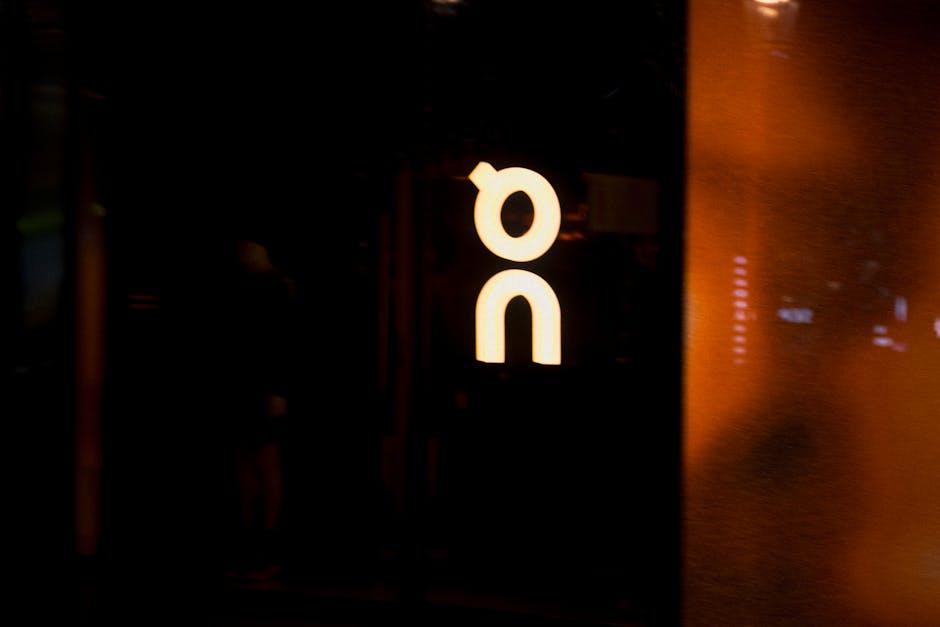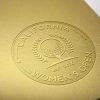
Welcome, color connoisseurs and logo lovers! Have you ever wondered why certain brands use specific colors in their logos? Well, strap in, because we’re about to dive headfirst into the world of color psychology and logo design. Get ready to unleash your inner Picasso and master the art of color like a true design guru. So grab your color wheel and a cup of coffee (or wine, we don’t judge), because we’re about to embark on a colorful journey filled with laughs, insights, and maybe even a few ah-ha moments. Let’s play with some hues and make the world a more vibrant place, one logo at a time!
Understanding the Psychology Behind Colors
Have you ever wondered why certain colors make you feel a certain way? Let’s dive into the fascinating world of color psychology and uncover the hidden meanings behind our favorite shades!
1. **Red:** This fiery hue is often associated with passion and power. It can raise your heart rate and increase your energy levels – perfect for a hot date or a high-intensity workout! On the flip side, too much red can also trigger feelings of anger and aggression. So, next time you’re feeling a little feisty, maybe swap out the red for something a bit more calming.
2. **Blue:** Ah, the color of serenity and calm. Blue is known for its calming effects on the mind and body, making it the perfect choice for a tranquil bedroom or a relaxing spa day. But be careful – too much blue can also lead to feelings of sadness and melancholy. So, if you find yourself feeling a little blue, maybe add a pop of a brighter color to lift your spirits!
3. **Yellow:** The color of sunshine and happiness! Yellow is a mood booster like no other, instantly brightening up any room or outfit. It’s no wonder that so many fast-food chains use yellow in their branding – they want you to feel happy and hungry! However, too much yellow can also lead to feelings of anxiety and overwhelm, so use this sunny shade in moderation.
So, next time you’re choosing a color scheme for your home or outfit, consider the psychological impact it may have on your mood. And remember, the beauty of colors lies in their ability to evoke emotions and feelings – so go ahead and paint the town red (or blue or yellow)!
Selecting the Right Colors for Your Brand
When it comes to selecting colors for your brand, it’s important to choose wisely. After all, you don’t want your brand to look like a clown threw up all over it (unless that’s the look you’re going for, in which case, more power to you).
Here are a few tips to help you select the right colors for your brand:
- Consider your target audience: Think about who you’re trying to appeal to. Are they more drawn to soothing blues or vibrant oranges?
- Look at your competition: You don’t want to blend in with the crowd, but you also don’t want to stick out like a sore thumb. Find a balance between standing out and fitting in.
- Think about the psychology of color: Different colors evoke different emotions. For example, red can make people hungry (which is why so many fast food chains use it) while blue can make people feel calm and relaxed.
Remember, the colors you choose will be the visual representation of your brand, so make sure they accurately reflect who you are and what you stand for. And hey, if all else fails, just go with your favorite color – after all, it’s your brand!

Utilizing Color Theory in Logo Design
Color theory is a superpower in the world of logo design. Forget about your cape, all you need is a color wheel and an eye for design to create a logo that will leave your competitors green with envy (or red with rage, depending on the color scheme).
When it comes to picking colors for your logo, it’s important to consider the emotions they evoke. For example, blue is often associated with trust and professionalism, making it a popular choice for corporate logos. On the other hand, yellow is bright and cheerful, perfect for brands that want to bring a little sunshine into their customers’ lives.
But why stop at just one color when you can have a whole rainbow to play with? Mixing and matching colors can create a logo that is not only visually appealing but also memorable. Think about the iconic red and yellow of McDonald’s, or the playful green and purple of Spotify. These brands understand that when it comes to color, the more the merrier!
So next time you’re designing a logo, don’t just stick to black and white. Embrace the power of color theory and watch your logo design skills level up faster than you can say “ROYGBIV”. Your brand will thank you, and so will your customers.

The Impact of Different Colors on Consumer Behavior
So, you’re out there trying to sell those widgets of yours but you’re not getting the results you desire. Have you ever considered that the color of your product might be affecting your potential customers’ behavior? Oh yes, my friend. Color psychology is a real thing and it can make or break your sales faster than you can say “rainbow sherbet.”
Let’s break it down for you in simple terms, shall we? Here’s a quick rundown of how different colors can impact consumer behavior:
- Red: This fiery color is known to evoke feelings of passion and excitement. It grabs attention like a bull in a china shop and can create a sense of urgency in consumers. If you want to make a statement, paint the town red!
- Blue: Ah, the color of trust and reliability. Blue is like your best friend who always has your back. It’s calming and serene, making it perfect for brands that want to instill a sense of security in their customers. Trust me, you can never go wrong with a little blue in your life.
- Yellow: This sunny shade screams happiness and optimism. It’s like a burst of sunshine on a rainy day. Yellow is great for grabbing attention and promoting energy, making it a popular choice for brands that want to exude positivity and cheerfulness.
So, there you have it! The next time you’re designing your product packaging or website, don’t forget to give some serious thought to the colors you choose. Because hey, a little splash of color can go a long way in winning over those fickle consumer hearts!

Creating a Strong Emotional Connection with Color
Color has the power to elicit strong emotions and reactions from individuals. By strategically using color in your designs, you can create a deep emotional connection with your audience. Here are some tips to help you harness the power of color and evoke the desired emotions:
Choose Your Colors Wisely: Different colors evoke different emotions. For example, blue is often associated with calmness and serenity, while red is associated with passion and energy. Consider the emotions you want to convey and choose your colors accordingly.
Use Contrasting Colors: Contrasting colors can create visual impact and draw attention to key elements in your design. Experiment with complementary colors or colors that are opposite each other on the color wheel to create a striking effect.
Consider Cultural Associations: Keep in mind that colors can have different meanings in different cultures. For example, white is associated with purity and innocence in Western cultures, but symbolizes death and mourning in some Eastern cultures. Be mindful of cultural associations when choosing colors for your design.
Implementing Color Trends in Logo Design
When it comes to logo design, staying on top of color trends is crucial. Below are some tips on how to effectively implement color trends in your logo design:
First and foremost, be sure to research current color trends in the design world. Look to resources like Pantone’s Color of the Year or popular design blogs for inspiration. Once you have a good idea of what colors are in vogue, start brainstorming how you can incorporate those hues into your logo design.
Consider using bold and vibrant colors to make your logo stand out. Bright, eye-catching colors are sure to grab people’s attention and leave a lasting impression. Don’t be afraid to experiment with unconventional color combinations – sometimes the most unexpected pairings can create the most memorable logos.
Remember that color psychology plays a key role in how people perceive your brand. Choose colors that evoke the right emotions and align with your brand’s message. For example, blue conveys trust and reliability, while red is associated with passion and energy. Make sure the colors in your logo are sending the right message to your audience.
FAQs
What are some common color associations in logo design?
Common color associations in logo design include red for energy and passion, blue for trust and stability, yellow for optimism and creativity, and green for growth and health.
How can I choose the right colors for my logo design?
When choosing colors for your logo design, consider your target audience and the emotions you want to evoke. Experiment with different color combinations to see what resonates best with your brand.
Can I use multiple colors in my logo design?
Absolutely! Using multiple colors in your logo design can add depth and complexity. Just make sure the colors work well together and don’t overwhelm the overall design.
What do neutral colors convey in logo design?
Neutral colors like black, white, and gray are often associated with sophistication, elegance, and timelessness. They can be a great choice for brands looking to convey a sense of professionalism.
How can I make my logo design stand out with color?
To make your logo design stand out with color, consider using unexpected color combinations or incorporating vibrant shades. Don’t be afraid to be bold and creative!
Color Your World
Congratulations, you’ve made it to the end of our crash course on logo color psychology! Now that you’re armed with this newfound knowledge, go forth and conquer the design world with your mastery of hues, tones, and shades. Remember, a splash of red here, a pop of yellow there, and you’ll be well on your way to captivating audiences and turning heads with your colorful creations. So go ahead, let your imagination run wild, and paint the town red (or any other color from the rainbow)!











